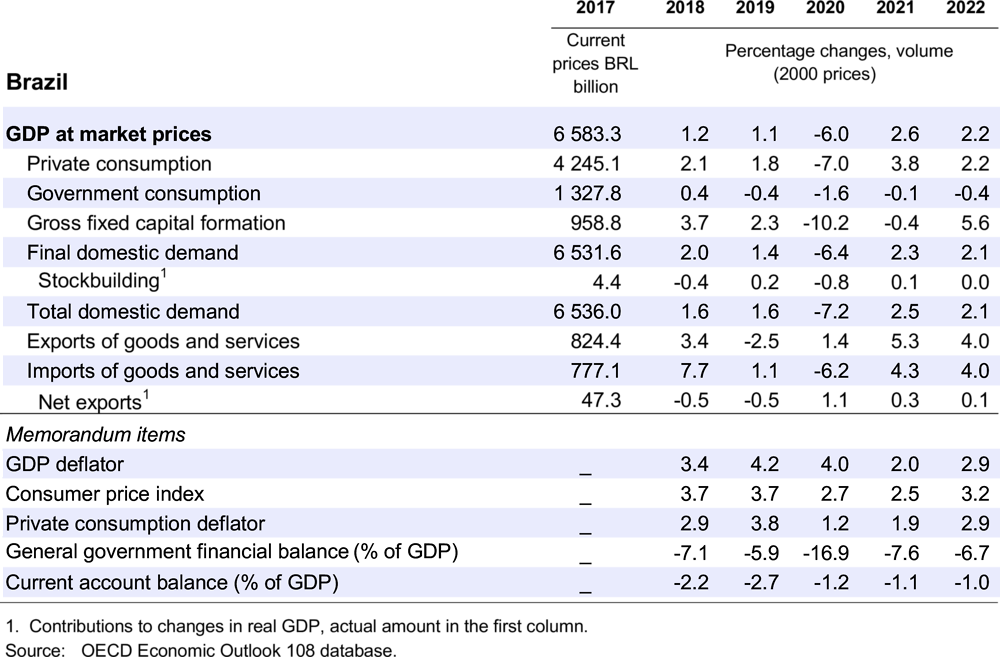Despite new infections and fatalities remaining high, the economy has started to recover across a wide range of sectors. GDP growth is expected to be 2.6% in 2021 and 2.2% in 2022, but activity will still fall short of pre-pandemic levels by late 2022. Inflation will remain below target and high liquidity provision, including through record-low interest rates, will support investment. Fiscal vulnerabilities have been exacerbated by the necessary policy response and public debt has risen. A failure to continue structural reform progress could hold back investment and future growth.
The strong fiscal and monetary policy response managed to prevent a sharper economic contraction. A temporary emergency benefit has supported over 67 million low-income households, cushioning the impact on household incomes and poverty. As the recovery will take time and some jobs may not return, well‑targeted improvements in social protection would be warranted. Reallocating some current expenditures and raising spending efficiency would allow such improvements to be financed, while simultaneously resuming the fiscal adjustment underway before the pandemic. Structural reforms to enhance domestic and external competition and improve the investment climate could raise productivity, while better professional training would allow more people to seize new economic opportunities.



